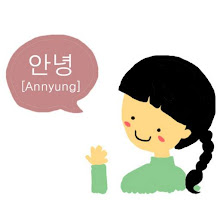 한 달 후에 아기가 태어나요.
한 달 후에 아기가 태어나요.My baby will be born in one month.
밥을 먹은 후에 이를 닦아요.
I brush my teeth after dinner.
대학교 졸업 후에 취직을 했어요.
I got a job after college graduation.
(=대학교를 졸업한 후에 취직을 했어요.)
I got a job after graduating from college.
Grammar Focus:
This pattern means ‘after a certain period of time’ or 'after some action’ and corresponds to ‘after’ or ‘later’ in English. It is used in the forms Time 후에’, 'Noun 후에’ and ‘V-(으)ㄴ 후에’ in a sentence.
When attaching to verbs, -ㄴ 후에 is added when the stem ends in a vowel, -은 후에 is added when the stem ends in a consonant, and when the stem ends in ㄹ, ㄹ is deleted, and -ㄴ 후에 is added to the remaining part of the stem.
-(으)ㄴ 다음에 can also be used in place of -(으)ㄴ 후에.

Conversation:
A: 언제 고향에 돌아가요?
When will you return to your hometown?
B: 1년 후에 가요.
In one year from now.
A: '집들이'가 뭐예요? What is meant by ‘집들이’?
B: 한국에서 이사한 후에 하는 파티예요.
It’s a Korean housewarming party for someone who just moved into a new house.
A: 수업 후에 시간 있어요? Do you have time after class?
B: 미안해요. 바빠요. 수업이 끝난 다음에 식당에서 아르바이트를 해요.
Sorry. I’m busy. After class ends, I have a part-time job at a restaurant.
Whats the difference between the expressions 1시 후에 and 1시간 후에?
• 1시 후에 오세요.
It means the person can come anytime after 1:00, such as 1:10, 2:00, or even 3:00.)
•1시간 후에 오세요.
(It means the person should come exactly one hour after some previously stated time. For example, if there is a meeting scheduled for 3:00, then the person should come at 4:00.)



.jpg)





0 comments: